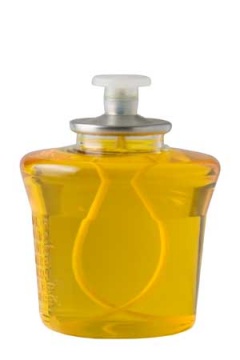Difference between revisions of "Citronella Oil"
| (3 intermediate revisions by the same user not shown) | |||
| Line 1: | Line 1: | ||
{{Infobox_Metals | {{Infobox_Metals | ||
| − | | image = | + | | image = Citronella_oil-1.jpg |
| − | | origin = | + | | origin = - |
| − | | stowage factor = | + | | stowage factor = - |
| − | | humidity and moisture = | + | | humidity and moisture = - |
| − | | ventilation = | + | | ventilation = - |
| − | | risk factors = | + | | risk factors = See text |
}} | }} | ||
| + | __TOC__ | ||
==Description== | ==Description== | ||
| − | + | Citronella oil is one of the [[Essential Oils]] obtained from the leaves and stems of different species of Cymbopogon (lemongrass). The oil is used extensively as a source of perfumery [[chemicals]] such as citronellal, citronellol and geraniol. These chemicals find extensive use in soap, candles and incense, perfumery, cosmetic and flavouring industries throughout the world. Citronella oil is also a renowned plant-based insect repellent. <br><br> | |
| − | <br><br> | + | Citronella oil is a light yellowish, essential oil with a rather pungent, citrus-like odour. It is soluble in 80% alcohol. The product may not be used on food crops.<br><br> |
| − | + | ==Application== | |
| − | + | Used as a perfume in soaps and disinfectants and in the manufacture of insect repellent. Because it is a non-toxic repellent when used in a limited amount, citronella poses no risks to people, pets or the environment. In fact, citronella works on insects without harming or killing them.<br><br> | |
| − | + | ==Shipment / Storage== | |
| + | Usually shipped in drums. Many citronella oil shipments are made in second-hand lubricating oil drums. In consequence, the oil becomes slightly contaminated by particles of dirt and lubricant. The small percentage remaining after treatment by suction is accepted by the trade and is easily removed by the consignee with the aid of filters. | ||
| + | |||
| − | |||
[[Category:Products]] | [[Category:Products]] | ||
| + | [[Category:Oil and chemicals]] | ||
Latest revision as of 14:25, 9 January 2013
| Infobox on Citronella Oil | |
|---|---|
| Example of Citronella Oil |  |
| Facts | |
| Origin | - |
| Stowage factor (in m3/t) | - |
| Humidity / moisture | - |
| Ventilation | - |
| Risk factors | See text |
Citronella Oil
Description
Citronella oil is one of the Essential Oils obtained from the leaves and stems of different species of Cymbopogon (lemongrass). The oil is used extensively as a source of perfumery chemicals such as citronellal, citronellol and geraniol. These chemicals find extensive use in soap, candles and incense, perfumery, cosmetic and flavouring industries throughout the world. Citronella oil is also a renowned plant-based insect repellent.
Citronella oil is a light yellowish, essential oil with a rather pungent, citrus-like odour. It is soluble in 80% alcohol. The product may not be used on food crops.
Application
Used as a perfume in soaps and disinfectants and in the manufacture of insect repellent. Because it is a non-toxic repellent when used in a limited amount, citronella poses no risks to people, pets or the environment. In fact, citronella works on insects without harming or killing them.
Shipment / Storage
Usually shipped in drums. Many citronella oil shipments are made in second-hand lubricating oil drums. In consequence, the oil becomes slightly contaminated by particles of dirt and lubricant. The small percentage remaining after treatment by suction is accepted by the trade and is easily removed by the consignee with the aid of filters.











